
Whether it is for a small betta bowl, 6 million gallons at the Georgia Aquarium, or for freshwater or saltwater aquariums, filtration still falls into one of three categories: biological, chemical and mechanical.
In the chemical department, the primary tool of the trade is activated carbon. A little bit of it goes a long way. Activated carbon does not break down, convert or add chemicals. It chemically adsorbs dissolved wastes from the aquarium; absorption also occurs with activated carbon when it absorbs gasses). Most filter systems in aquariums large and small contain a space for carbon. Carbon is one of the most common forms of chemical filtration available today.
Click image to enlarge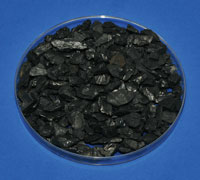
Activated carbon is made from organic-based materials, such as wood, coal, peat and many others — even coconut shells. Carbon can filter both air and water. Different carbon works better with air; other carbon works better with water. Certain carbons work better with air or water due to the size of their pores, the size determining how well they filter (see the section, “The Core,” for more details).
One type of carbon for water filtration is made from coal, peat or lignite. There is also carbon from bitumen coal, known as bituminous carbon, which is used extensively for filtering drinking water, among many other applications. Other sources of carbon substitutes are available, but bituminous is the most widely used type of carbon to filter liquids.
Combined with biological and mechanical filtration, activated carbon is very effective at filtering the water. This soft to semi-hard black gravel-like media is made from carbon materials. Activated carbon is not really burned like wood; rather, it is activated by steam and microwave (see the section “Activating Carbon” for more information).
This makes activated carbon more effective in trapping any unwanted substances. Many carbons are also treated with acids to open up their pore structures more and lower their ash content. The pores of activated carbon provide excellent chemical adsorption.
“Activating” Carbon
Carbon is activated by steam and microwave. Raw material is pressure-cooked in an oxygen-depleted oven, then “activated” with steam or acids to increase the amount of pores in the carbon. This makes activated carbon more effective in trapping unwanted substances. Many carbons are also treated with acids to open their pore structure more and lower ash content.
The Core
Carbon can come from coconut shells, but it has very small pores. Coconut carbon mainly filters airborne materials. Carbon made from peat forms crater-size pores. These large pores enable the peat-based carbon to adsorb dissolved organic compounds. Bitumen-based carbon also filters dissolved organic compounds. Activated carbon can be part of every aquarium filtration system. Guess where dissolved organics come from: your fish and the food you feed them (also airborne dust, oils and smoke). Dissolved organic compounds come from the accumulation of organic matter breaking down in an aquarium.
Because of the high sensitivity of hard and soft corals to chemical changes, reef aquarists fret over dissolved organic compounds. This is where the foam-bubbling protein skimmer comes in. Like activated carbon, it is a form of chemical filtration. Its foaming action chemically removes dissolved organic compounds before they break down. It reduces bioload, the amount of biological material for the biological filter to break down.
The good news is activated carbon removes dissolved organic compounds pretty quickly. It removes two major categories of dissolved organic compounds: tannins and phenols. Tannins refer to substances promoting tanning or coloration. Activated carbon removes color from water. Phenols are nasty stuff. They are caustic compounds, capable of corroding or eating things away. Activated carbon removes these acids.
Modern municipalities treat tap water with a chlorine and ammonia mixture called chloramine, which does not dissipate in water as quickly as the old-fashioned chlorine did. Activated carbon converts the chlorine component to chloride, but the ammonia is still in the aquarium/water. Activated carbon can also remove some heavy metals.
Carbon in Reef Tanks
Some aquarists worry about using activated carbon in miniature coral reef systems. They are concerned that too much carbon used too frequently might remove too many trace elements required by sensitive corals, but trace elements are easily replaced by partial water changes and supplemental replenishments.
The Concerns
The bad news is that activated carbon does not remove ammonia, nitrite or nitrate from water. Moreover, some poor-quality carbons may leak phosphate into the aquarium water. Excess phosphate leads to algae blooms and/or growth.
Another worry is that fresh activated carbon is powerful enough to raise pH levels in the aquarium. Depending upon water chemistry and the type used, activated carbon adsorbs carbon dioxide and can change other chemical levels, such as pH. The pH change is usually temporary, however to minimize it and reduce dust, rinse activated carbon for one minute before using it.
The Conundrums
Worries mix with inaccuracies when it comes to issues of how much activated carbon to use and how frequently to change it. The most effective amount and how often to change it is not an exact equation.
The most effective amount of activated carbon depends on the particular aquarium. It depends on the size of tank, the extent of filtration, the number of fish, meat-eating invertebrates and the portions and frequency of feedings. So instead of hard equations, there are more general guidelines. One is from Albert Thiel, famous for his articles on coral reefkeeping in Freshwater and Marine Aquarium magazine. He reports that only 3 tablespoons (about a third of a cup) of activated carbon keeps a 50-gallon reef tank free of color (Thiel, “A Method for Using Activated Carbon”).
One good activated carbon container is the gray, flat-sided, 9-by-6 inch, plastic “clam shell” used in popular power filters. The container’s two sides suspend the activated carbon in a flat grid of 8-inch-long grid rows, actively forcing water to pass over the bed.
Make sure to filter the water mechanically before it reaches the carbon. The fine particles known as detritus clog the minute pores of the carbon. Clogging the pores defeats the purpose of using carbon because then it cannot do its job. Place a fiber pad in the water flow before the water reaches the carbon.
In addition to the pad, stretch an old piece of nylon socking over the grid. The stocking acts as a fine filter to prevent detritus from clogging the activated carbon. The flow rate of water through the carbon does not have to be fast. Water flow equal to only one tank volume per day was the best. (Spotte, 1992)
Although many people think so, reactivating carbon with very high temperatures and water (to reuse it) is not possible without expensive equipment. Simply using new activated carbon is not expensive.
Activated carbon is quite effective for filtering water. It removes dissolved organic compounds, color, odor and nasty acids. Although the amount of activated carbon used and frequency of change depend on feeding practices and filtration in the aquarium system, a small, suspended amount works within a day.
 Aquarium Carbon
Whether it is for a small betta bowl, 6 million gallons
Aquarium Carbon
Whether it is for a small betta bowl, 6 million gallons
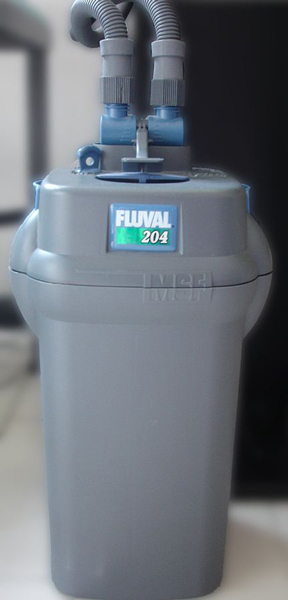 Canister Filters
In this article we will deal with a type of filter that many
Canister Filters
In this article we will deal with a type of filter that many
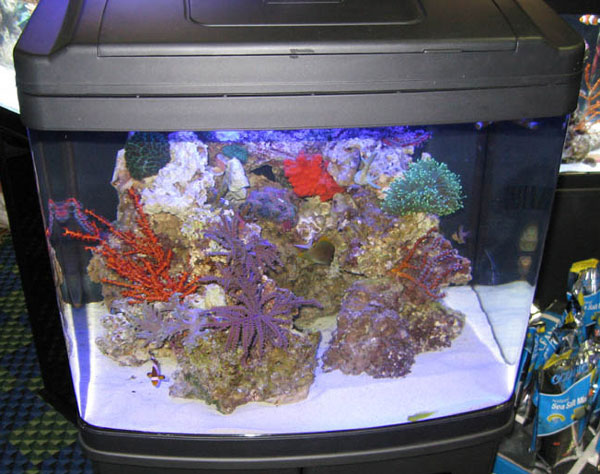 Marine Nano Tank Problems
Marine Nano Tank Problems
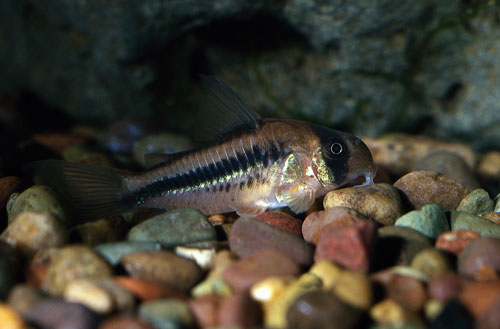 Top 10 Fishkeeping Mistakes
Aquarists can say they’ve never made a mistake in their fish
Top 10 Fishkeeping Mistakes
Aquarists can say they’ve never made a mistake in their fish
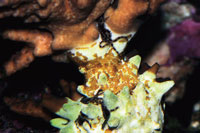 Coral and Invertebrate Quarantine Procedures
Coral and Invertebrate Quarantine Procedures
Copyright © 2005-2016 Pet Information All Rights Reserved
Contact us: www162date@outlook.com